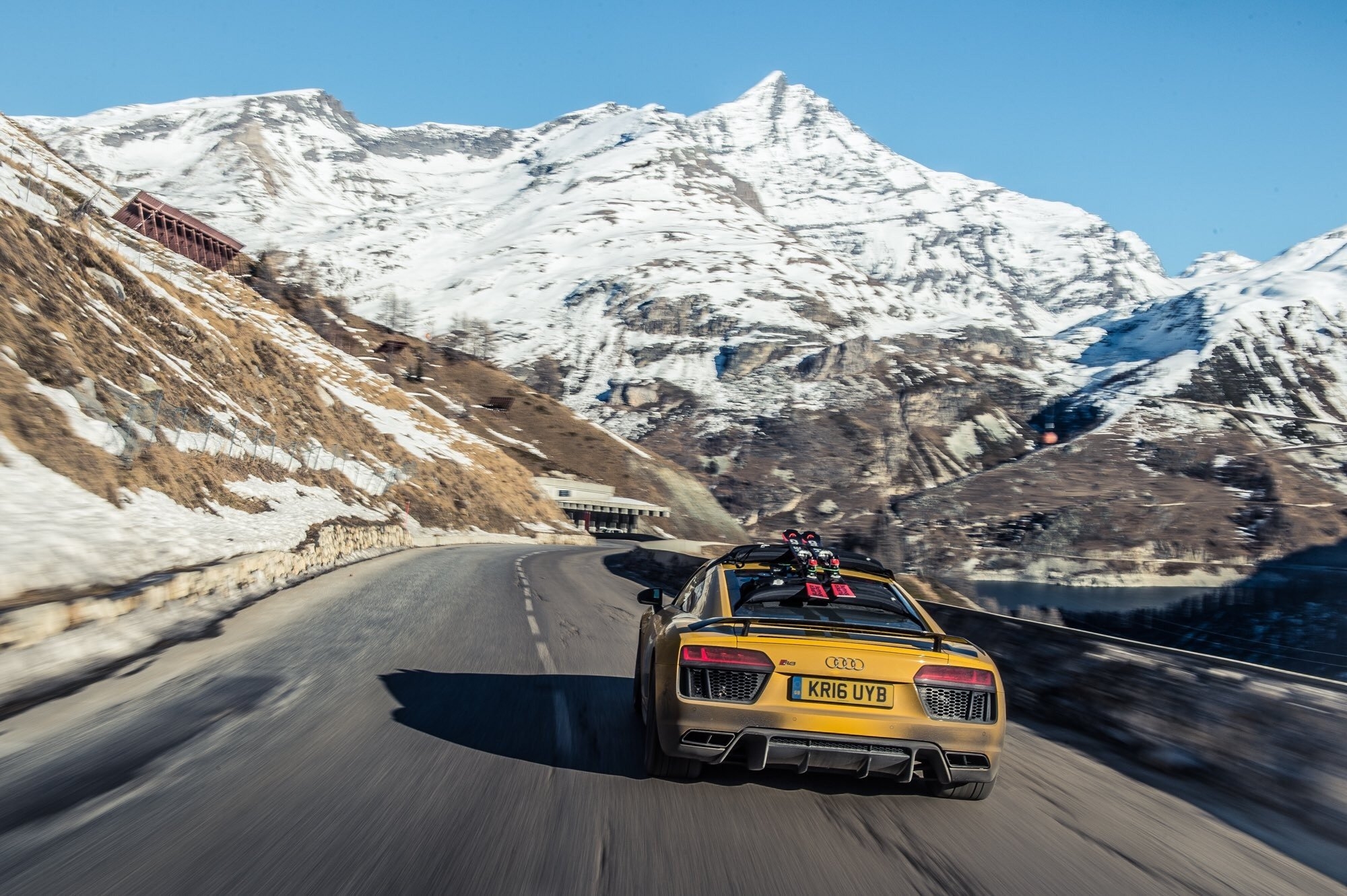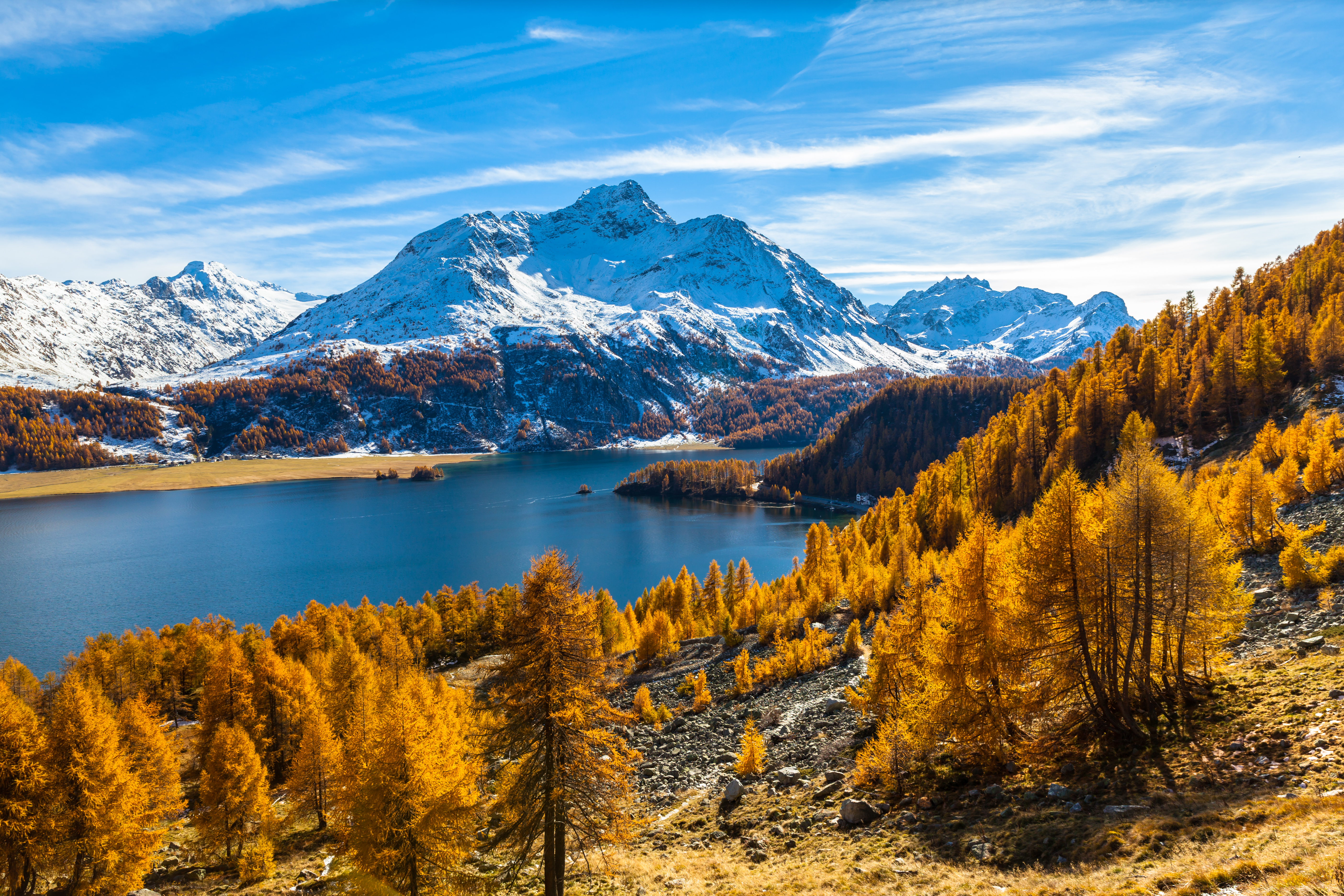Driving Safely Through the Mountains: The Best Cars for Alpine Passes in Summer
The majestic Swiss Alpine passes offer not only breathtaking views but also a special challenge for both car and driver. Tight hairpin turns, steep climbs and sudden weather changes demand a lot from the vehicle, even in summer. Whether it’s a relaxed family trip or a sporty tour through the mountains, the choice of the right vehicle is crucial for safety and driving pleasure.
Which car really suits you and the demanding Swiss mountain passes? Is it the compact SUV with its raised seating position, the nimble sports car for maximum cornering fun, or perhaps a modern electric car with powerful performance? Here’s what really matters when choosing a vehicle for alpine routes.
What Makes a Good Car for Mountain Passes?
Before we recommend specific models, let’s look at the characteristics a car should have for driving on passes. Contrary to popular belief, pure engine power is not the decisive factor.
An ideal mountain car combines several important features:
Drive and traction: While all‑wheel drive is essential on snow‑covered passes in winter, it also offers advantages in summer. It provides better traction in corners and on inclines, especially on wet roads after a summer rain. Modern front‑wheel drives with electronic traction aids can also perform well.
Handling and weight distribution: A low center of gravity and balanced weight distribution ensure safe cornering. Sporty small cars often score better here than high SUVs, which tend to lean more in tight turns.
Brakes and downhill driving: Good braking performance is vital on mountain roads. Modern cars feature electronic braking aids that prevent locking. An added benefit is an effective engine brake or, for electric cars, regenerative braking, which helps reduce strain on the braking system during descents.
Engine power and torque: Not just horsepower but strong torque in the mid‑range makes a difference. This helps when accelerating out of slow corners and on steep inclines. Hybrid and electric cars are particularly strong here, with their instantly available torque.
Automatic vs. manual: Enthusiasts often prefer manual gearboxes for winding roads, but a modern automatic with paddle shifters offers more comfort and allows the driver to focus fully on the demanding route. Automatics can also hold lower gears on steep descents to use engine braking.

Top Vehicle Classes for the Mountains: From SUV to Sporty Small Car
Compact SUVs: Versatile and Comfortable
Compact SUVs like the VW T‑Roc, Audi Q3 or BMW X1 offer a good mix of everyday usability and mountain suitability. Their advantages for Alpine passes:
Increased ground clearance for unpaved parking lots or gravel roads to excursion points
Better visibility thanks to a higher seating position
Often available with all‑wheel drive
Plenty of space for luggage and gear
However, SUVs tend to compromise on cornering dynamics, and their higher drag means slightly higher fuel consumption.
Sporty Small Cars: Agility Meets Efficiency
For pure driving fun on winding mountain roads, sporty small cars are often the better choice. Models like the Mini Cooper S, Audi A1 or VW Polo GTI offer:
Agile handling thanks to low weight and low center of gravity
Precise steering in tight corners
Lower fuel consumption than larger vehicles
Easier maneuvering on narrow mountain roads
These “cornering champs” combine compact dimensions with surprising comfort for longer trips.
Electric Cars: Quiet Powerhouses for the Mountains
Modern electric cars like the VW ID.3, Hyundai Kona Electric or Tesla Model 3 bring specific advantages for mountain driving:
Instantly available torque for effortless acceleration on inclines
Efficient energy recovery (regeneration) when descending
No performance loss at high altitudes (unlike combustion engines)
Quiet operation for a nature‑connected driving experience
It’s worth noting that range may fluctuate more on hilly routes, and charging stations are not yet fully available in remote mountain regions.
Luxury and Performance Models: For the Exclusive Experience
Premium vehicles like a Porsche 911, BMW M3 or Mercedes‑AMG C63 provide a special driving experience on Alpine roads. They make sense when:
Maximum driving fun on winding roads is a priority
Budget is not a concern
Uncompromising performance is desired
These cars are less practical for transporting gear, often have lower ground clearance, and tend to attract attention on popular passes.

Recommended Models for Summer in the Alps
Compact SUVs:
Škoda Karoq 4×4: Balanced suspension, reliable all‑wheel drive and practical “Simply Clever” storage solutions. Comfort on longer mountain trips is often praised.
Volvo XC40: Excellent safety features, good handling and comfortable seats for longer tours. Swiss tests rate its build quality highly.
Sporty Small Cars:
Mini Cooper S: A classic for mountain driving with go‑kart‑like handling and cult appeal. Popular among Swiss drivers for its direct steering.
Ford Fiesta ST: Excellent value for money and highly dynamic. Its powerful turbo engine makes accelerating out of hairpins effortless.
Electric Cars:
Tesla Model 3 Long Range: Long range, strong performance and good handling make it a top electric choice. The well‑developed Swiss Supercharger network simplifies longer trips.
Kia EV6: Features 800‑volt technology for ultra‑fast charging, all‑wheel drive and balanced dynamics, praised in Swiss tests.
All‑Rounders:
VW Golf GTI/R: Combines sporty handling with everyday usability and plenty of space. The R version with all‑wheel drive is ideal for demanding mountain roads.
Audi A4 Avant quattro: Great for families needing more space, combining comfort, handling and traction with all‑wheel drive.
Rent or Subscribe to a Mountain‑Ready Car?
Not everyone needs a mountain‑ready car all year round. Flexible options include:
Renting a suitable car for a summer Alpine vacation
Choosing a flexible car subscription
Advantages:
Choose the right car specifically for your planned routes
No long‑term commitment or depreciation
Usually newer models with modern safety tech
All key costs like insurance and servicing included
A car subscription is ideal if you:
Spend several weeks or months in the mountains
Value flexibility but want more planning security than a short‑term rental
Want to try a special car like a sporty all‑wheel drive without committing long‑term
When choosing a rental or subscription car:
Is cross‑border driving allowed (important for multi‑country passes)?
Are the tires in good condition and suitable for mountain driving?
What insurance coverage is included, especially for stone chips or minor damage?
Are there mileage limits that could be an issue for extended trips?
Tips for Safe and Fun Driving on Alpine Passes
Optimize braking technique:
Use engine braking by shifting to a lower gear before corners
Brake primarily on straight sections, not in the middle of corners
Take breaks on long descents to prevent brake overheating
The most beautiful Swiss passes in summer:
Susten Pass: Scenic route with spectacular views
Furka Pass: Famous from the James Bond film "Goldfinger" and known for its dramatic curves
Gotthard Pass: The historic alternative to the tunnel with views of the Ticino mountains
Grimsel Pass: Impressive reservoirs and granite formations
Consider weather and strain:
Sudden weather changes can occur at high altitudes even in summer
Avoid overstraining the engine in hot temperatures - take breaks if overheating signs appear
Thinner air at high elevations can slightly reduce combustion engine performance
Tips for driving fun in Switzerland:
Drive early in the morning or late in the afternoon to avoid traffic on popular passes
Plan varied routes that combine several passes
Allow time for photo stops and scenic breaks
Observe local traffic rules - Switzerland enforces strict speed limits
Preparing Your Car for the Pass
A thorough check can save a lot of trouble.
Before the trip:
Check coolant level (especially important in summer heat)
Check brake fluid level
Inspect tire pressure and tread depth (at least 3‑4 mm for optimal grip)
Test air conditioning for efficiency
Refill windshield washer fluid (for insect buildup)
For electric cars:
Research charging stations along your route
Ensure the battery is fully charged and pre‑conditioned before long climbs
Adjust regeneration settings for downhill sections
Useful gear:
Updated navigation maps (don’t rely solely on smartphones, coverage can be patchy)
Sunglasses with good UV protection (sunlight is stronger at higher altitudes)
Plenty of drinking water
For older cars: spare coolant and motor oil
Light jacket or sweater (even in summer it can get cold at altitude)
FAQs About Cars for Mountain Passes
Do you need all‑wheel drive for mountains in summer? Not necessarily on paved Alpine passes, but it improves traction in wet conditions and on steep corners. A well‑tuned front‑wheel drive with modern aids is enough for most situations.
Which cars are especially safe on mountain roads? Vehicles with a low center of gravity, balanced suspension and modern assistance systems like hill‑start assist and curve braking. Swedish and German brands often score well in safety tests.
How do I find the right car for spontaneous mountain trips? Flexible car subscriptions are ideal. Choose the right car for your planned trip - from a sporty convertible for a solo tour to a roomy SUV for a family outing.
Are electric cars suitable for long mountain tours? Yes, modern EVs with large ranges work well. Their instant torque and energy recovery on descents are big advantages. Plan charging stops in advance.
Which vehicle class is best for beginners in the mountains? Compact SUVs or station wagons are ideal. They offer a higher driving position for better visibility and are easier to handle on narrow roads.
Can you drive over passes with a normal small car? Yes, modern small cars are perfectly capable for summer pass driving. They are also more maneuverable and fuel‑efficient. Drive cautiously and avoid overloading.
What engine power is optimal for mountain driving? Torque is more important than horsepower. Around 150-200 hp is sufficient for Alpine passes if the torque is strong and the car is not overloaded.
Is a diesel engine worth it for mountain driving? Diesels offer strong low‑end torque, which helps on climbs. But they are pricier and more complex due to emissions systems. Modern turbocharged gasoline engines are often just as good.
Conclusion
The right car for summer Alpine passes depends on your priorities. For maximum cornering fun, sporty small cars are often the best choice. For versatility, compact SUVs offer a great balance of comfort and capability. Eco‑minded drivers will appreciate modern electric cars as powerful and efficient companions.
What really matters: good preparation and choosing a car that fits your driving style. With the right vehicle, crossing the majestic Alpine passes becomes an unforgettable experience.
The flexibility of car subscriptions and rentals allows you to choose the perfect vehicle for every trip. Whether you want to cruise with the family or explore the limits of driving dynamics solo - there’s a car for every need.
No matter what you choose: safety comes first. Drive defensively, take regular breaks, and adapt to the weather conditions for a spectacular and safe Alpine trip.
Ready for your Alpine adventure? Find the perfect car for your summer mountain trip at carify.com. With our flexible car subscriptions, you can choose exactly the vehicle that fits your plans - whether a sporty cornering expert, a comfortable all‑wheel drive or an eco‑friendly EV.